
| Dulcimers | Lessons | Our Work | Store | Woodshop Blog |
There are a number of factors to keep in mind when resawing lumber to make bookmatched pieces. Figured lumber is expensive, so we need to maximize yield so that we can make affordable instruments, and the enterprise remains profitable. But, we also need to cut everything somewhat oversize; ends must be cut square after final thicknessing and width are cut, and we must allow enough extra thickness so we can remove saw marks.
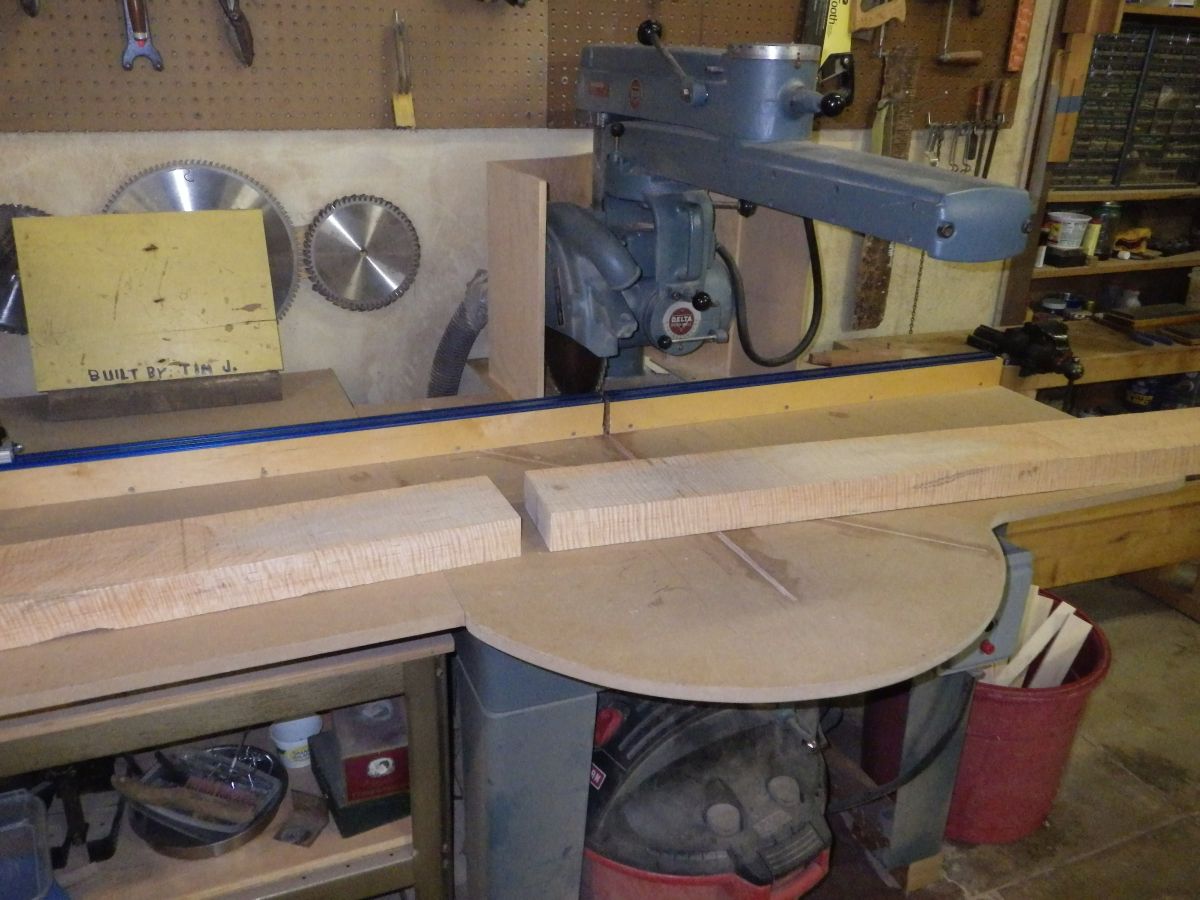
We'll cut this 8/4 x 6" x 96" curly maple board into book-matched dulcimer parts. First step is to remove the board ends and any checks, and cut sections into rough lengths, while avoiding any defects in the board.
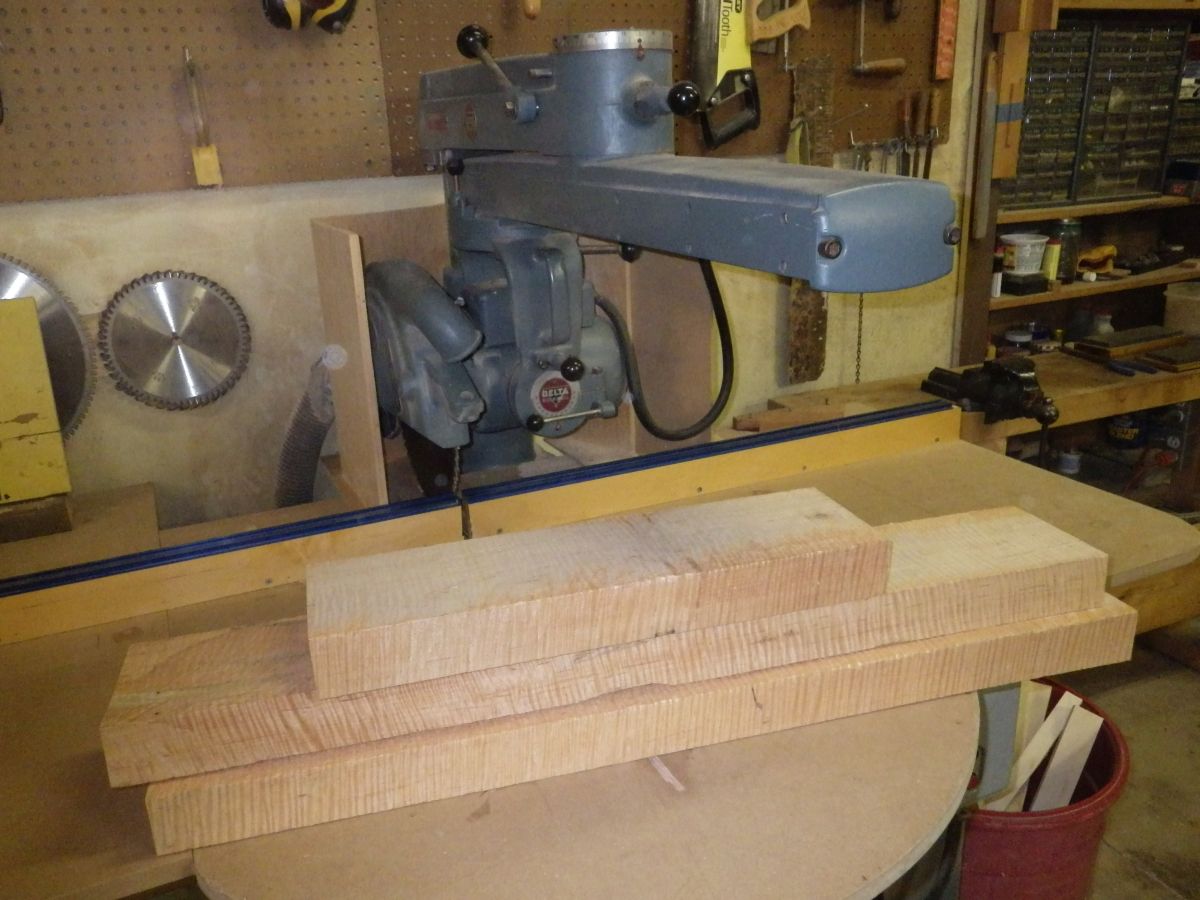
36" lengths can be used for sides, backs & tops, and fretboards. The smaller piece can be used for pegheads and tailstocks.
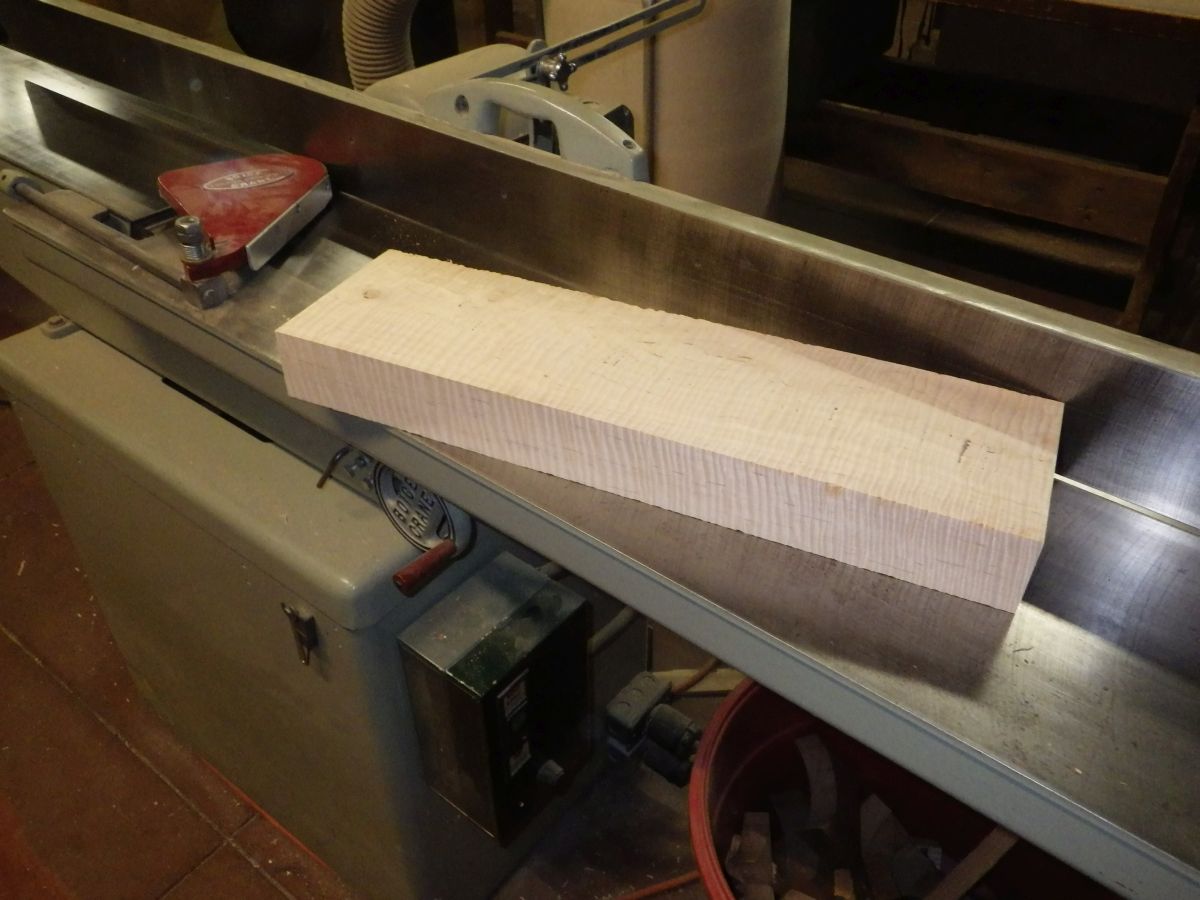
One side is made perfectly flat on the jointer, and one edge is made straight and square to the face.
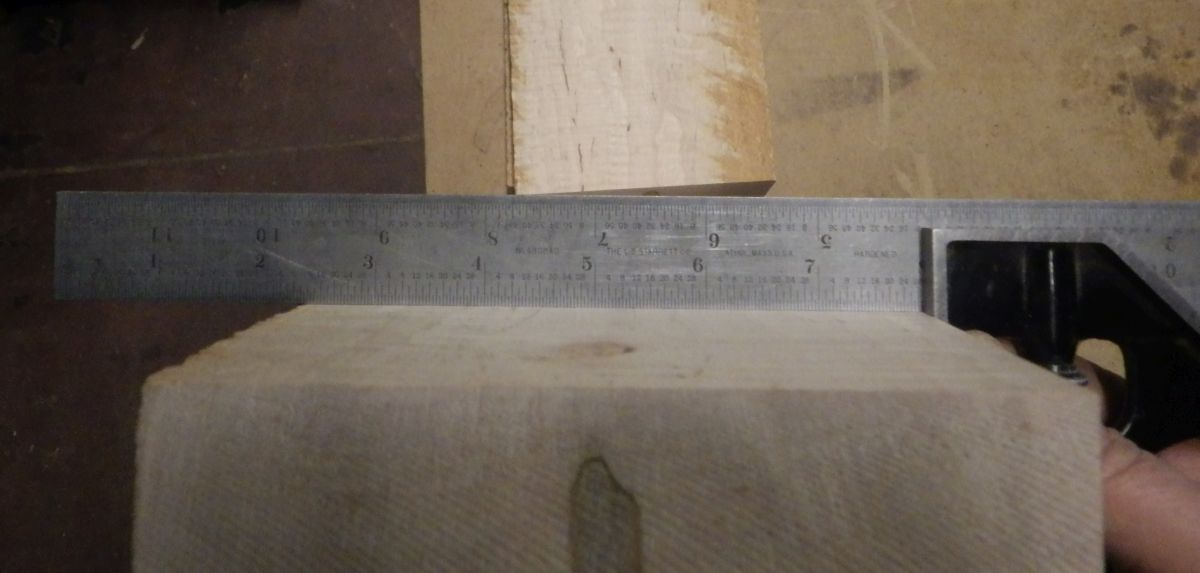
The work is checked for accuracy. If the work is square, and the bandsaw is properly set up, our resawn pieces will have parallel faces, and require minimal sanding, saving material and providing the best match.

The pieces all have one true face and edge, and are ready for resawing.
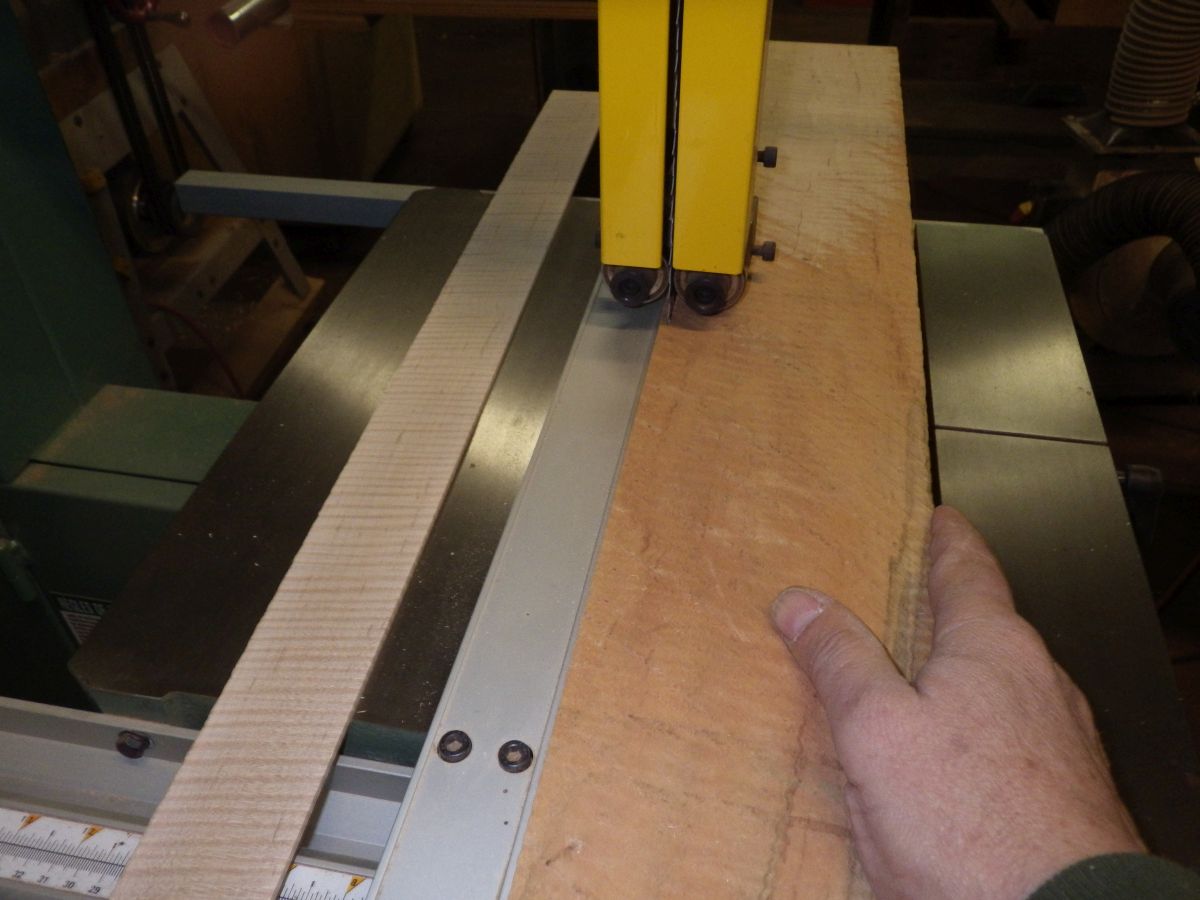
The bandsaw must be set up properly for good results: the blade should track straight and be square to the table, the guides should be aligned to keep the blade running true, the fence must be square and perpendicular, and the blade should be fresh - either new or just sharpened. The blade won't run true when it starts to get dull, wasting stock and yielding poor matches.
Here I am slicing off pieces that will become sides; I'll leave enough width on the board to make tops and backs.
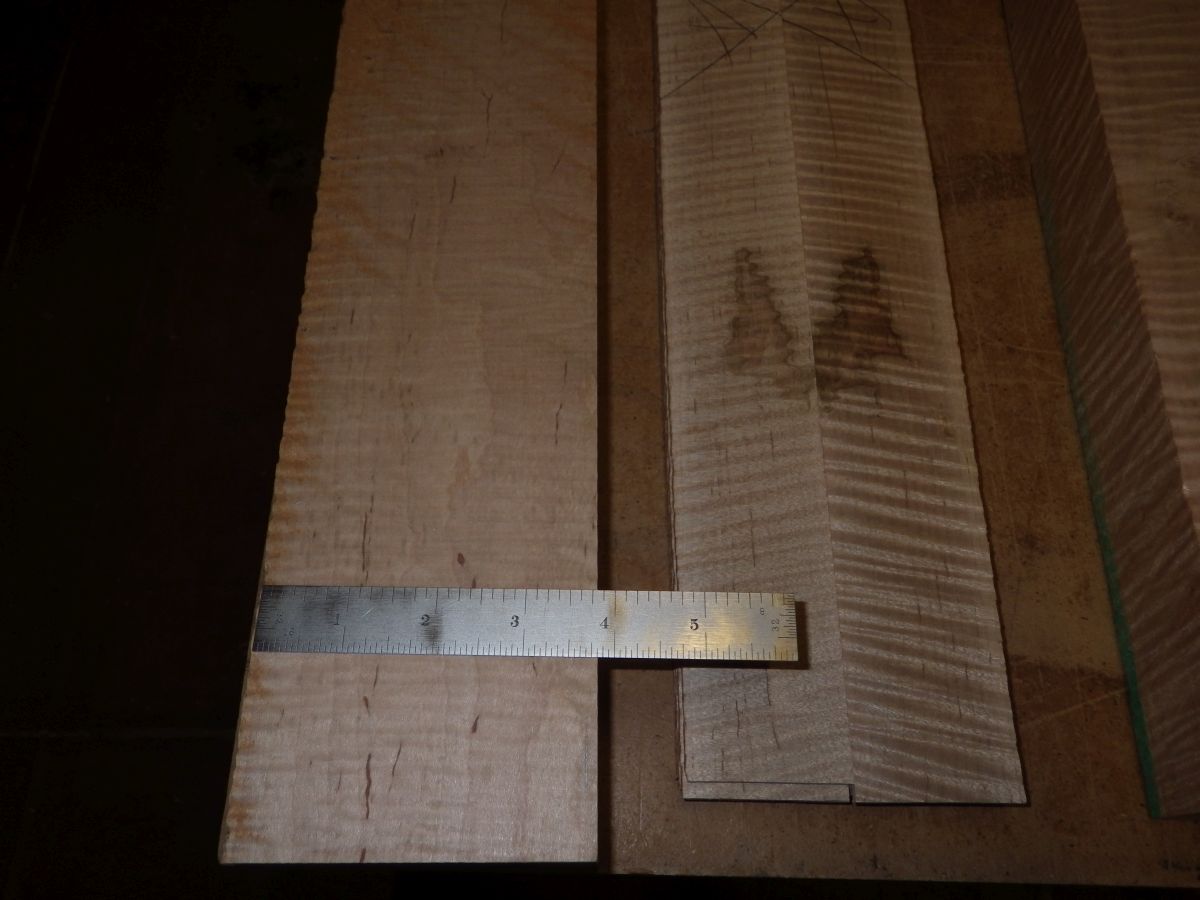
My tops and backs will finish at 7" wide at the lower bout, so I am going to start cutting tops and backs from this board, after having cut 4 pairs of bookmatched sides.
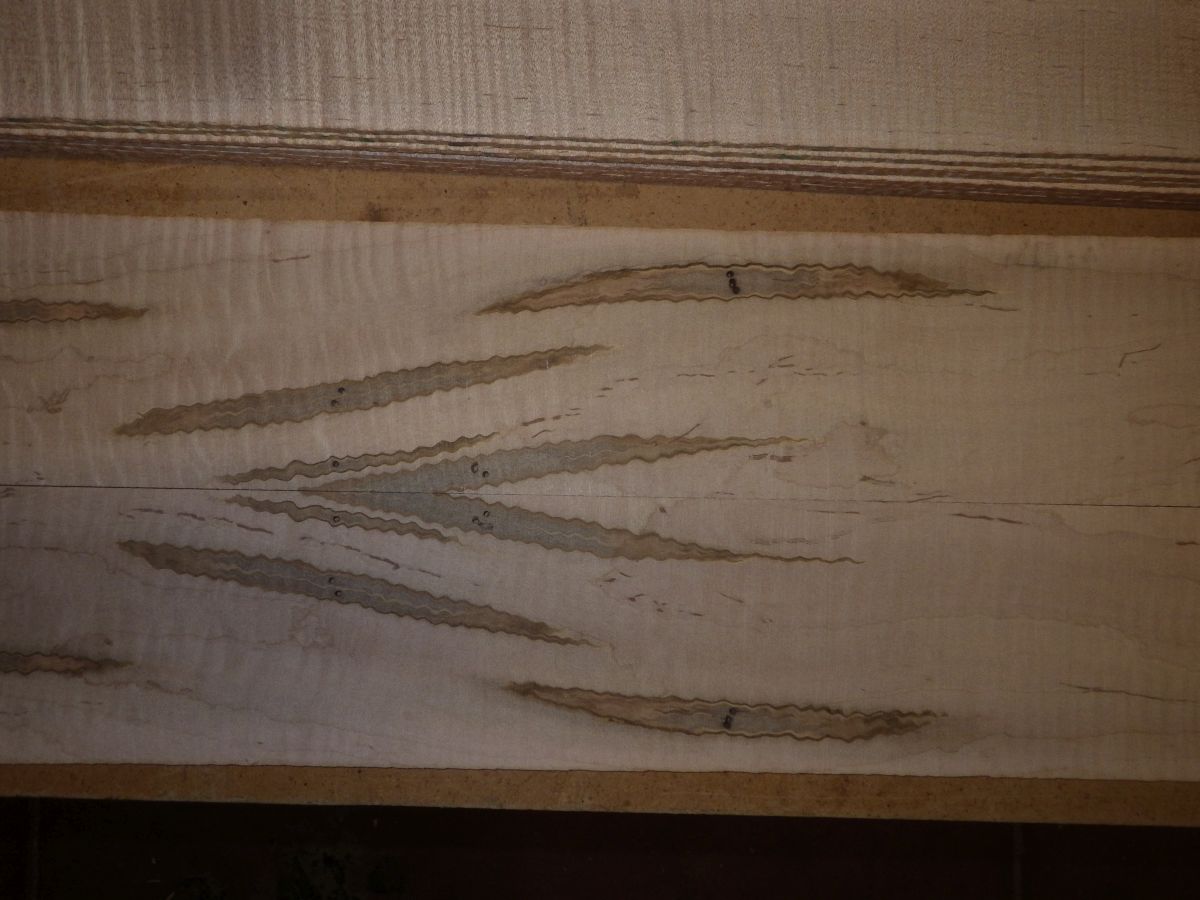
The best possible match is achieved through accurate setup, and a good quality resaw blade. Here, a thin kerf variable pitch Timberwolf blade has given a cut that will require minimal sanding.
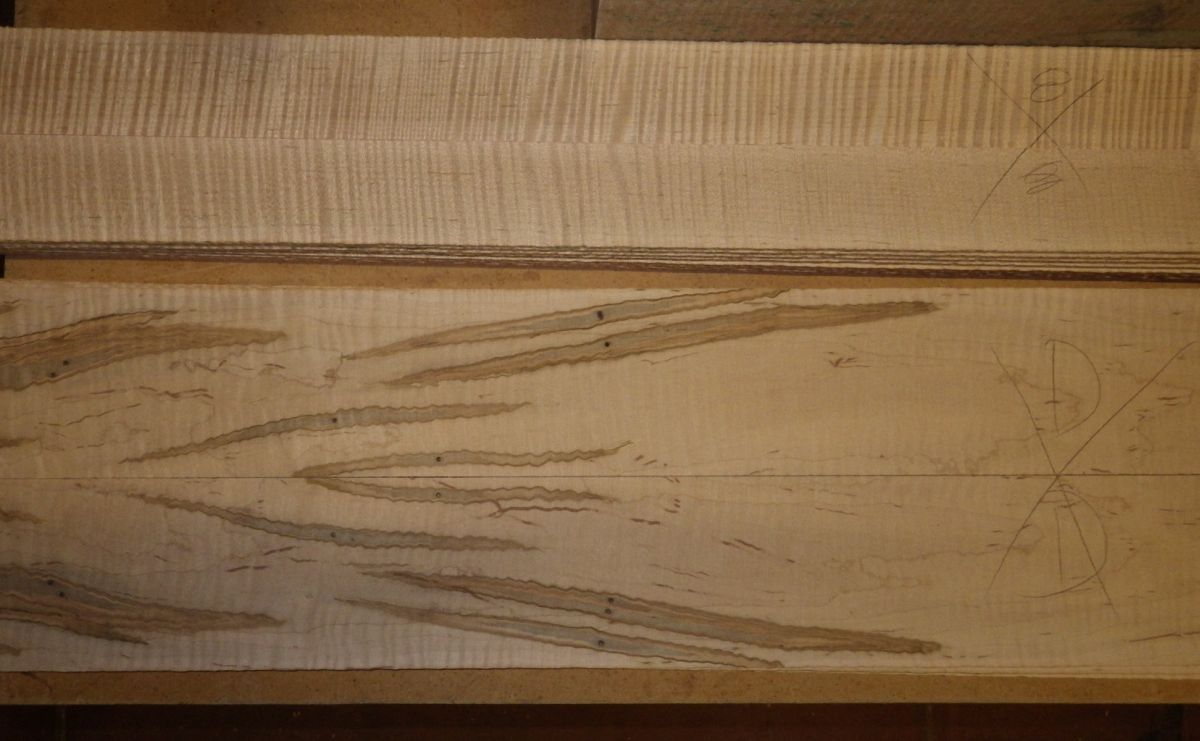
Sets are marked and ready for thickness sanding.
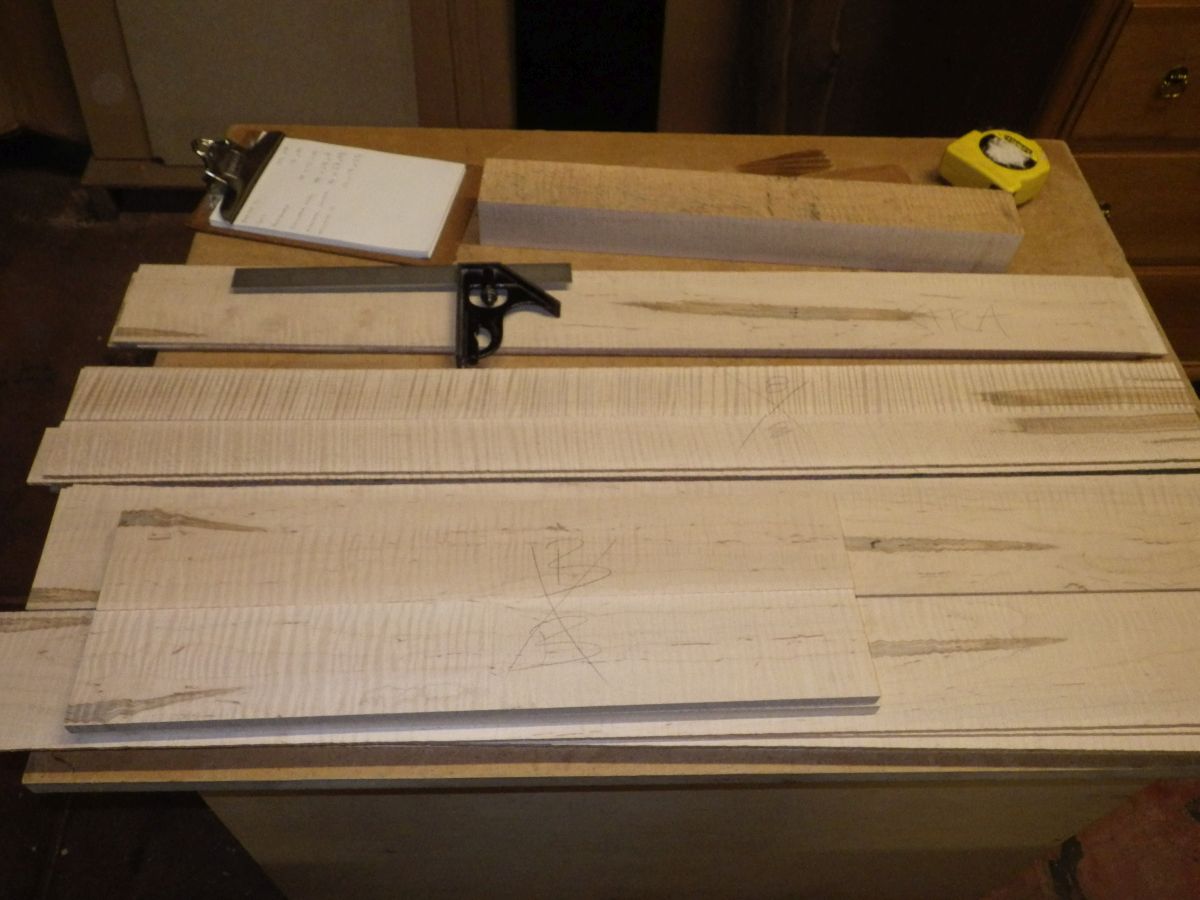
The shorter piece is ripped to rough width, then resawn thick enough to make bookmatched headstock sides. The cutoff will be used to make tailstocks. I chose not to cut fretboards from this board, as I have another matching board from the same log that I can cut them from. So the color and figure of all the parts will match.
Total yield from this board is 8 pairs of book matched sides, 8 bookmatched backs or tops, 4 pairs of bookmatched headstock sides, 6 tailstocks, and 3 extra pieces.
Dark Hollow Dulcimers 256 Durham Road, Ottsville, Pennsylvania 18942